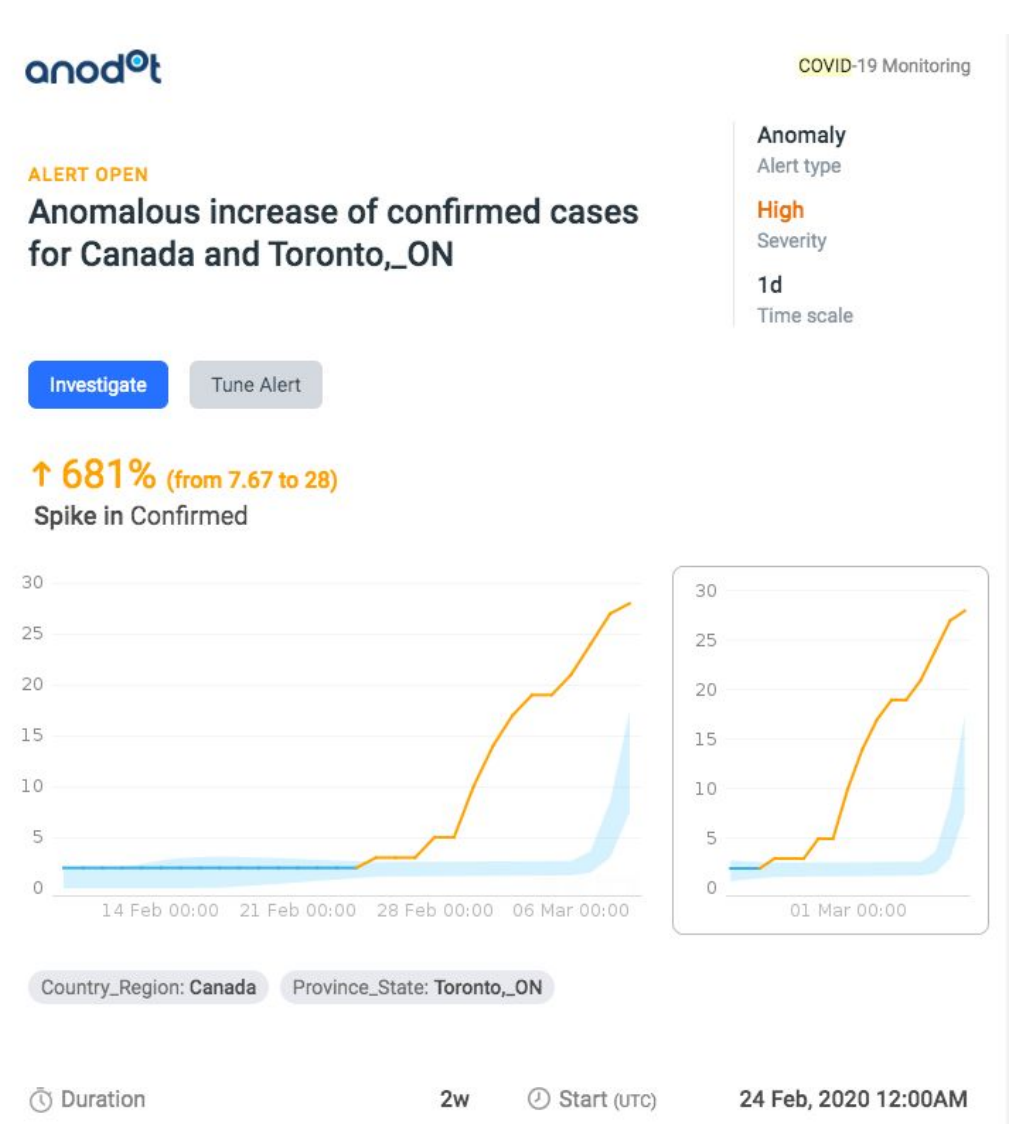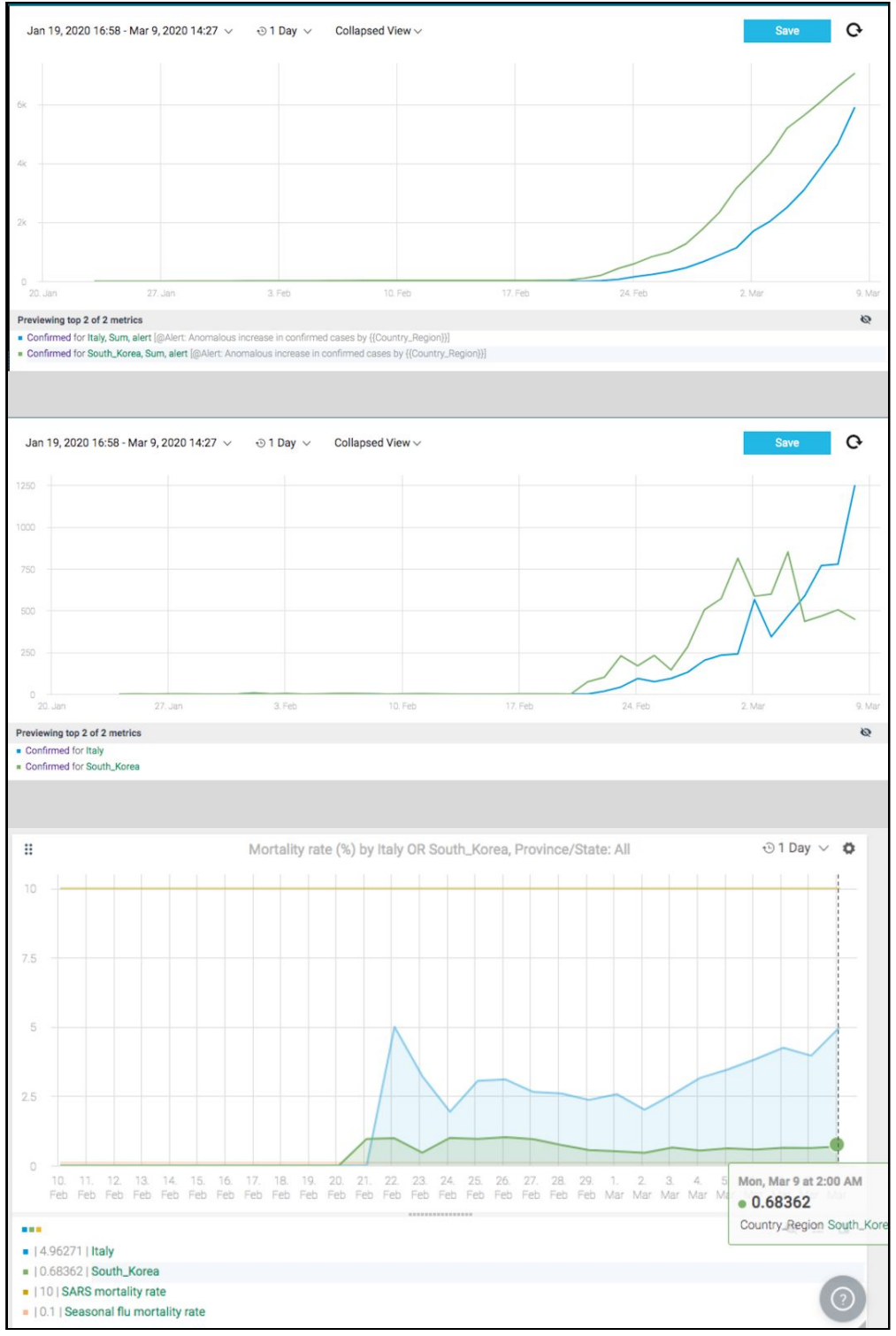COVID-19 online tracker now available to global public
Autonomous monitoring company, Anodot, has launched a public service that monitors locally reported COVID-19 cases, and notifies users when a particular region’s numbers change significantly. Those interested can subscribe to email alerts or follow #coronatracker on Anodot’s Twitter account (@TeamAnodot).
"During the past couple of days a number of our employees voiced concerns over the growth of the virus in their home cities around the world. We began using our own machine learning algorithms to track it, and quickly realised that lending the use of our technology to the global public is the minimum we can do to help during this very difficult time,” said David Drai, CEO and Co-founder, Anodot.
“We will continue to look for other potential insights we can offer and hope the information will aid people’s decisions, as so many of us are grappling with whether commuting to work, travelling or attending large events puts ourselves and our families at risk.”
Anodot is running its algorithms based on publicly available data derived from The Center for Systems Science and Engineering (CSSE) at Johns Hopkins University.
Anomalous spike in cases detected in Toronto, Canada

"It’s crucial to monitor the rate of newly reported cases and not only the absolute number to better evaluate the situation," said Ira Cohen, Chief Data Scientist and Co-Founder, Anodot.
The company’s monitoring has already identified the following insights:
1. If the numbers from China are correct, they are well on the path to containment.
2. While Italy and South Korea have an overall similar number of confirmed cases, South Korea has managed to reduce the infection rate over the last week, while the rate in Italy is still increasing (see attached graphs).
South Korea also has a much lower mortality rate (0.68%) vs. Italy (~5%), which may be due to having implemented widespread testing.
Despite similar number of COVID-19 cases, South Korea's mortality rate is consistently lower than Italy's:

The second graph illustrates the total number of confirmed COVID-19 deaths for both countries, and how they both begin following the same trajectory until 5th March, when South Korea experiences a sustained drop in fatalities.
In the third graph, which depicts both countries’ mortality rates, despite the total number of cases that both countries appeared to share at the start of the outbreak, South Korea’s mortality rate has never risen above one percent, while Italy’s has been between 2-5%.
Anodot's Business Monitoring platform uses machine learning to constantly analyse and correlate every business parameter, providing real time anomaly alerts and forecasts.





